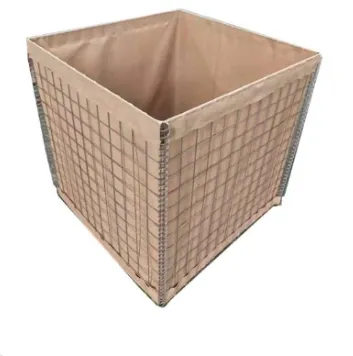Understanding the cost components of chain link fencing can be a pivotal factor in deciding whether it is the right choice for your property. With decades of expertise in property management and landscape architecture, this guide is designed to offer you an in-depth look into the financial and practical aspects of chain link fences. A well-planned investment not only enhances property security and aesthetic appeal, but also optimizes your budget.

To begin with, the materials chosen for your chain link fence significantly influence the overall expense. Galvanized steel is the most common material, valued for its durability and cost-effectiveness. It undergoes a zinc-coating process that makes it resistant to rust and corrosion, a critical factor for outdoor fencing in variable weather conditions. Alternatively, vinyl-coated chain link fences provide additional protection and aesthetic value. These types are usually higher in price, but the investment results in reduced long-term maintenance costs.
It’s important to consider not only the price of the materials but also the fence height. Standard heights range from four to six feet, suitable for most residential properties. However,
security needs might demand taller fences. In these scenarios, increasing the fence height will naturally increase the material cost. High-tensile types can offer an improved balance between cost and strength, especially useful for commercial properties requiring increased security.

Installation is another major element in the cost equation. Professional installation fees fluctuate based on region and the difficulty of the terrain where the fence is being installed. Rocky or uneven surfaces can upsurge costs due to the additional labor and tools required to ensure stability. To mitigate costs, seek out contractors with a strong local reputation — their familiarity with local terrain and building codes can lead to efficient installations and avoid potential pitfalls that would incur extra charges.
chain fence cost
Maintenance should not be overlooked in cost considerations. Regular inspections and timely repairs preserve the fence’s functionality and appearance, preventing minor issues from escalating into substantial expenses. Galvanized and vinyl-coated fences typically require less maintenance, thus lowering lifetime costs. Nonetheless, budgeting for occasional cleaning and repairs ensures extended longevity and durability.
Authoritativeness comes into play when choosing a trusted supplier and installer. Reputable vendors often provide warranties and post-installation support, adding valuable peace of mind to your investment. Always solicit multiple quotes and request a detailed breakdown of costs to ensure transparency. Membership in professional bodies, such as the American Fence Association, can also be an indicator of trustworthiness and adherence to industry standards.
Finally, environmental conditions must also be factored into cost considerations. In coastal or industrial areas where salt and pollutants may accelerate corrosion, investing in enhanced protective coatings or materials designed to withstand such environments can prove cost-effective over time.
Ultimately, chain link fences represent a sustainable and adaptable option for myriad applications, from residential gardens to expansive commercial sites. Balancing the initial expenditure with functionality requirements and ongoing maintenance needs reflects a sound strategy in selecting chain link fencing. As an industry expert, my recommendation is to conduct thorough research and seek professional consultations tailored to your unique requirements. This not only ensures an optimal balance of cost-efficiency and performance but also guarantees a practical and secure fencing solution that withstands both environmental challenges and evolving property needs.
 TEL:
+86-13102802206
TEL:
+86-13102802206
 Email:
fencenetting@china.com
Email:
fencenetting@china.com
 Language
Language
 TEL:
+86-13102802206
TEL:
+86-13102802206
 Email:
fencenetting@china.com
Email:
fencenetting@china.com
 Language
Language



